August 14-15, 2018
First, here are pictures from the drive.
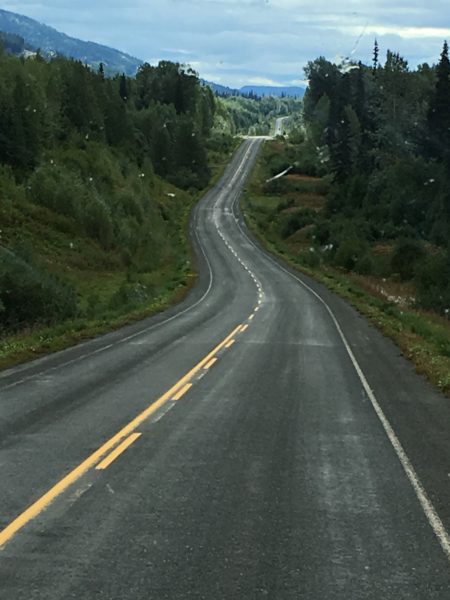
The road was narrow and curvy, as we’ve come to expect.
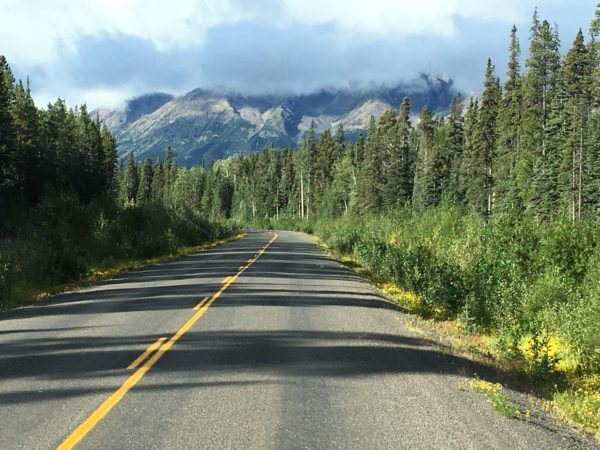
It was also lined with bright yellow wildflowers.
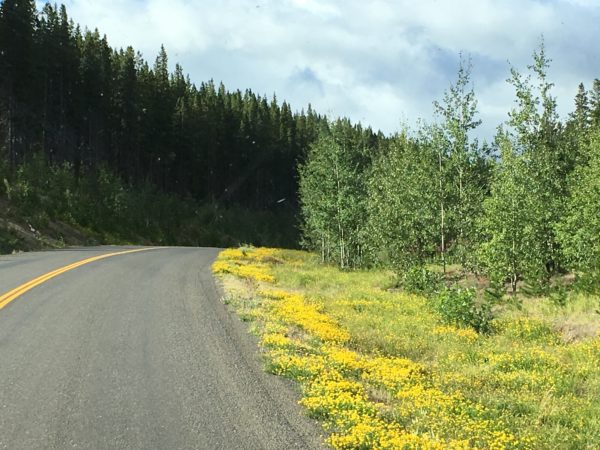
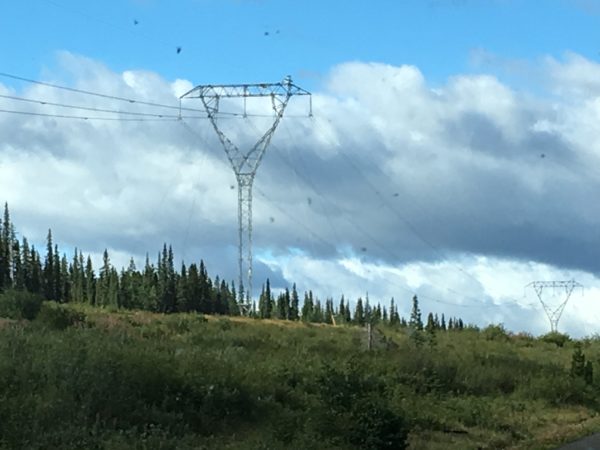
We were surprised at the narrow bases for power line supports. We guess they are designed to withstand earthquakes.
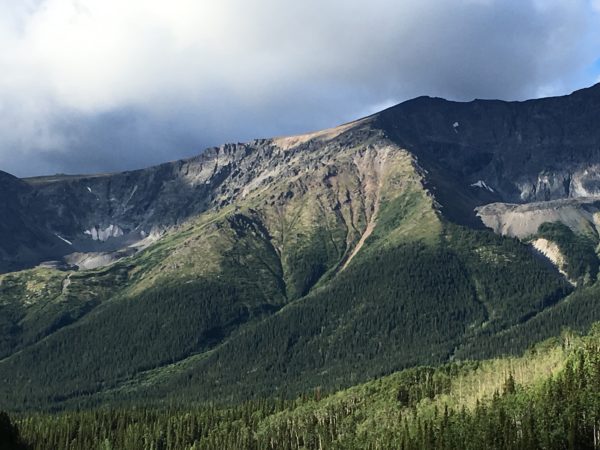
We never get tired to the interplay among sun, mountains, and sky.
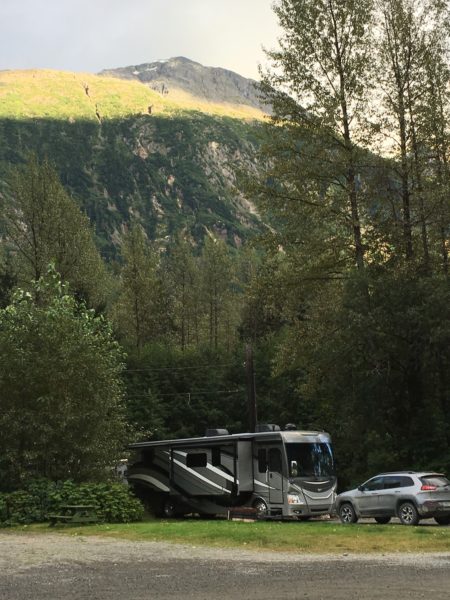
Here we are tucked safely under the mountain along the Bear River.
Stewart, British Columbia
Stewart is located at the head of the Portland Canal, a 90-mile fjord that makes for Canada’s most northern ice-free port. It does not appear ever to have been a location where First Nations members settled, although they passed through the area to hunt and fish. The first settlers were 68 prospectors who came to the area in 1898 looking for placer gold. A few years later, in 1902, John and Robert Stewart laid out a townsite. Robert was the first postmaster and named the town for himself. Many buildings and roads were constructed on pilings, the remains of which are still visible.
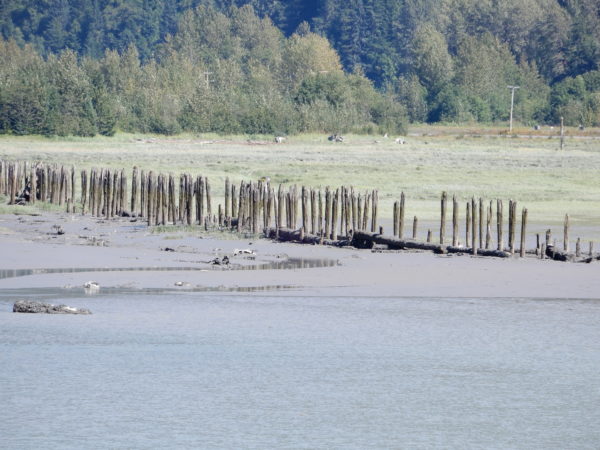
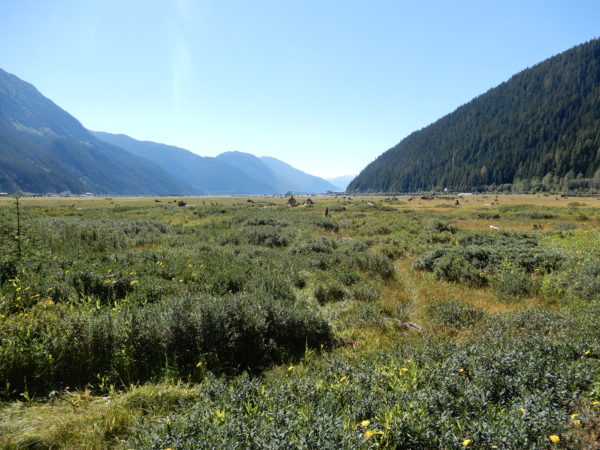
As many as 10,000 people lived in the area prior to World War I, supporting mineral exploration and development, especially gold and silver. Stewart’s current population is about 500. Mining and logging are principal industries.
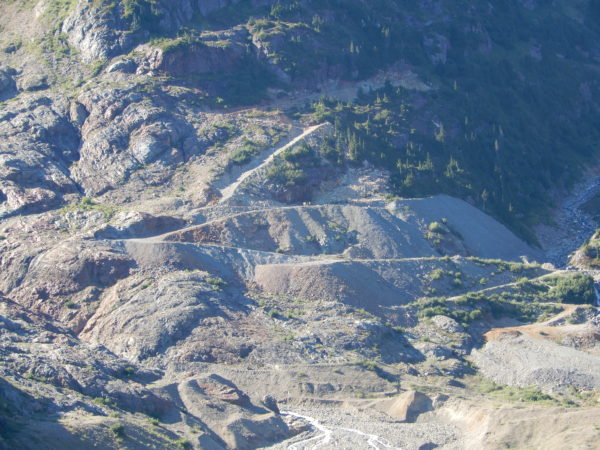
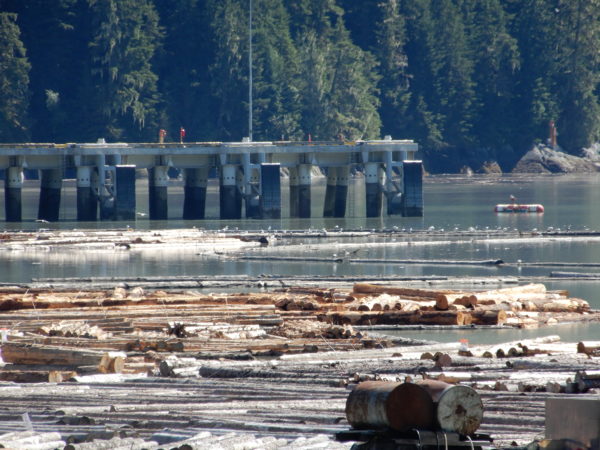
Movies made in Stewart include The Thing, Iceman, Leaving Normal, Bear Island, and Insomnia. Autographed pictures of movie stars, including Robin Williams, were in both of the restaurants we visited. Stewart is not Hollywood, however: The grocery store is strictly cash only.
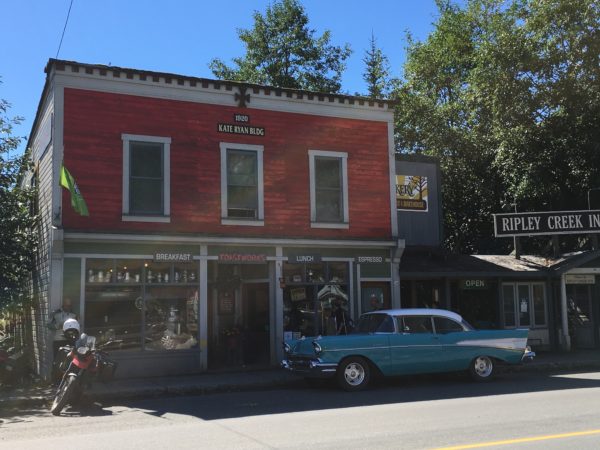
One fun restaurant was Toast Works–the food was good and the collection of breakfast appliances was a lot of fun.

We enjoyed a visit to the Stewart Museum.
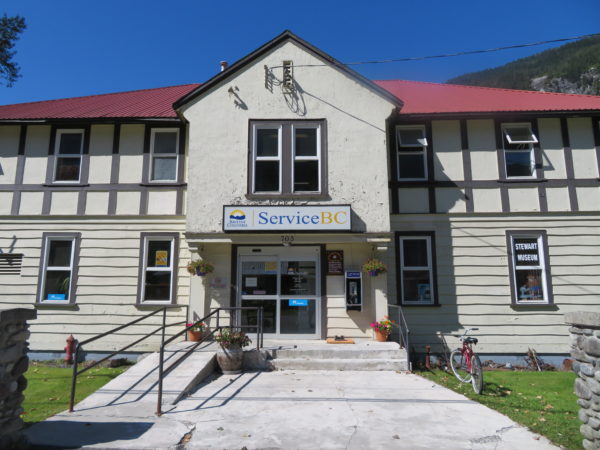
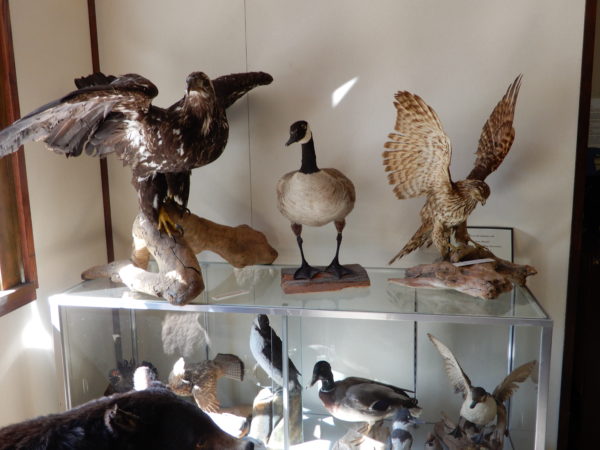

Mining safety equipment
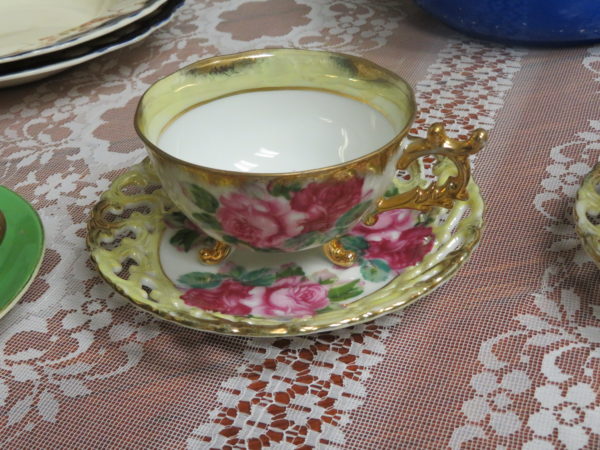
A footed teacup on a lacy saucer
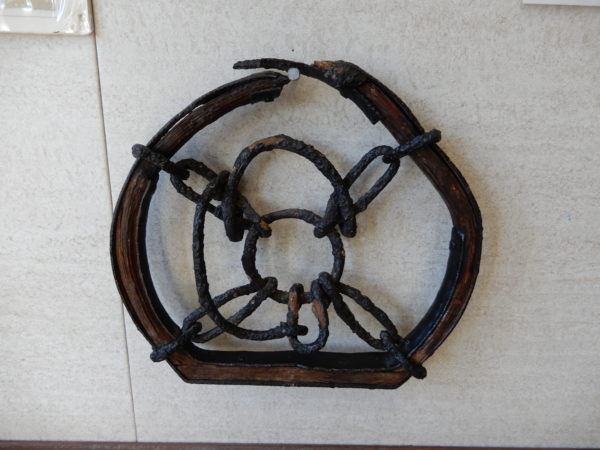
A snowshoe for a horse
We walked along Stewart’s Estuary Boardwalk.
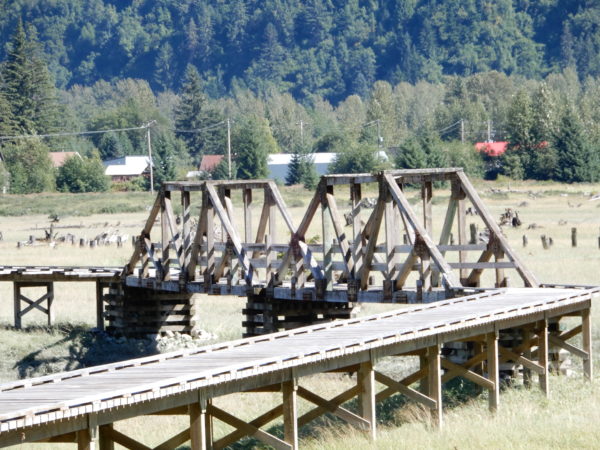
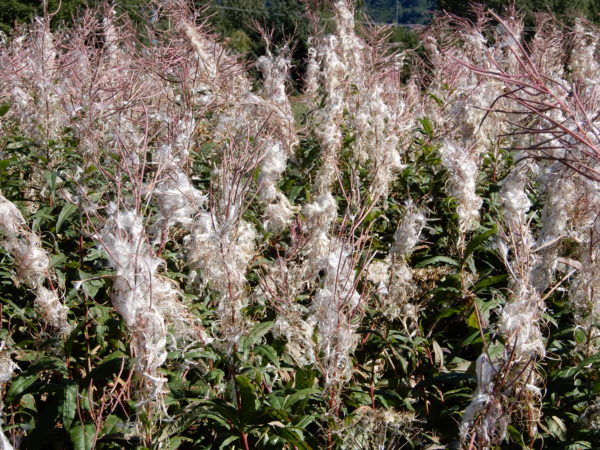
The fireweed had finished blooming.
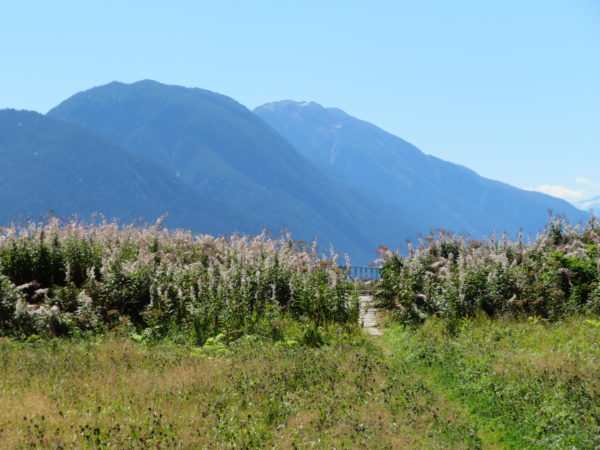
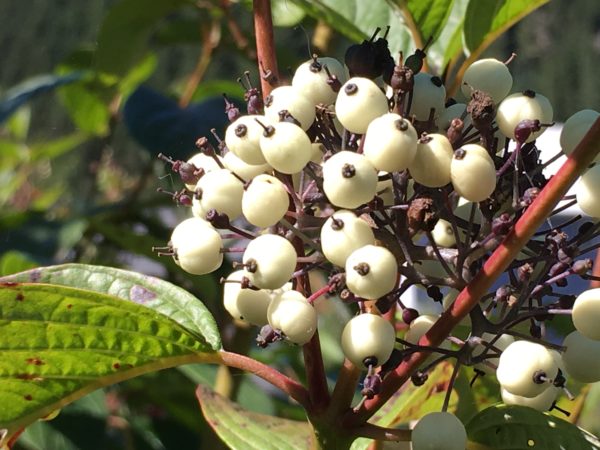
Grey dogwood berries
Hyder, Alaska
Hyder is about two miles from Stewart. Early residents wanted to call it Portland City, but the U.S. Post Office said Portland was too common and the town was named for a Canadian mining engineer. The border from Canada into the U.S. is unguarded, but a stop is required to re-enter Canada. A few years back, Canada decided to close the border between midnight and 8 a.m. Residents were unhappy and put up the following signs.
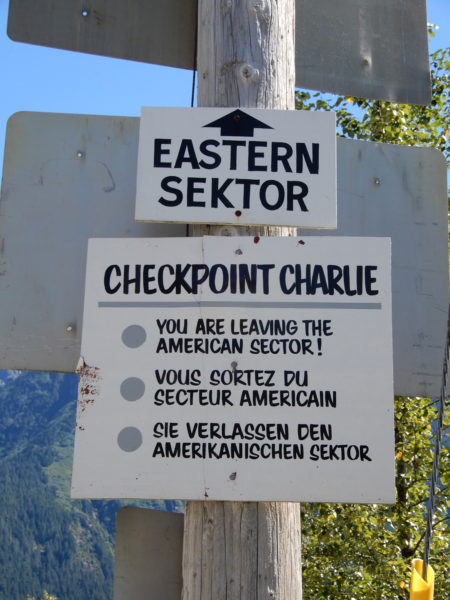
The Canadian government relented: Anyone needing to cross when a border agent is not present can follow posted instructions and document entry by telephone.
The year-round population in Hyder is about 60–it made the list of Ghost Towns in North America as early as 1945.
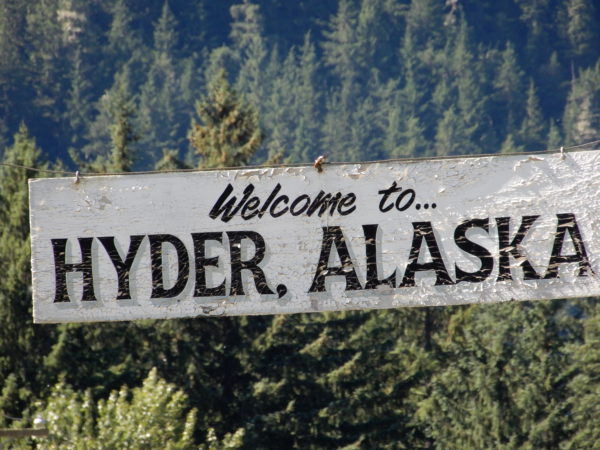
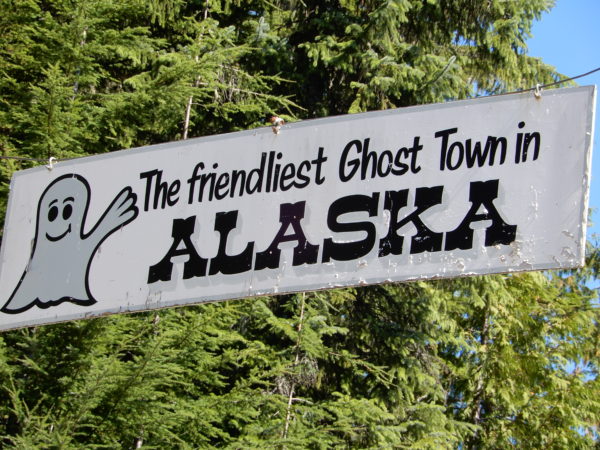
Hyder doesn’t feel like a ghost town, but in some places it looks like one.
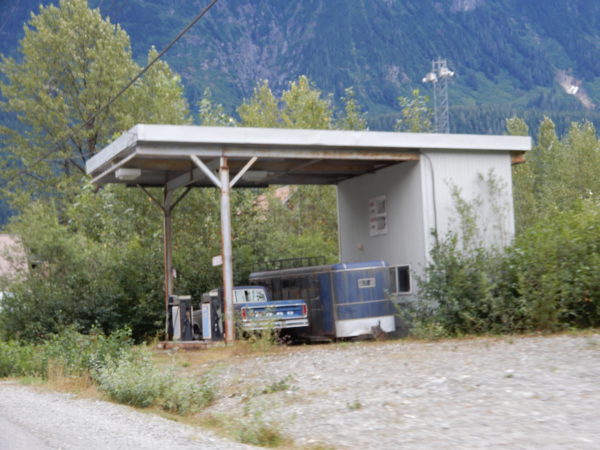
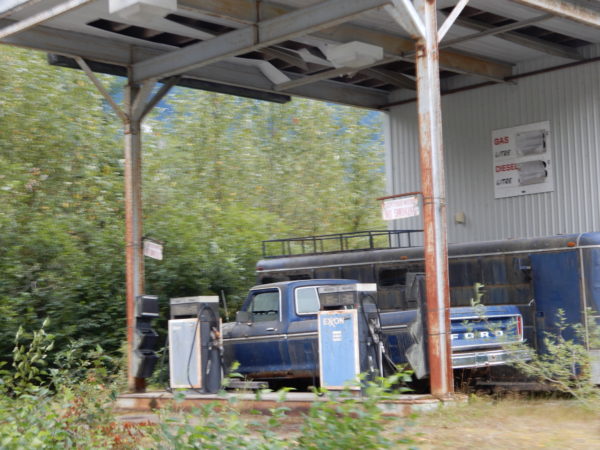
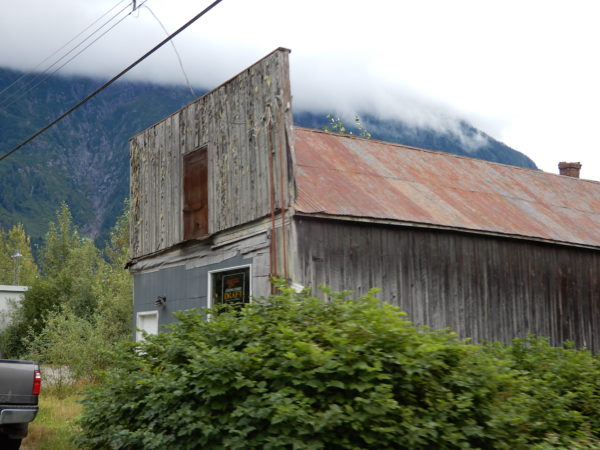
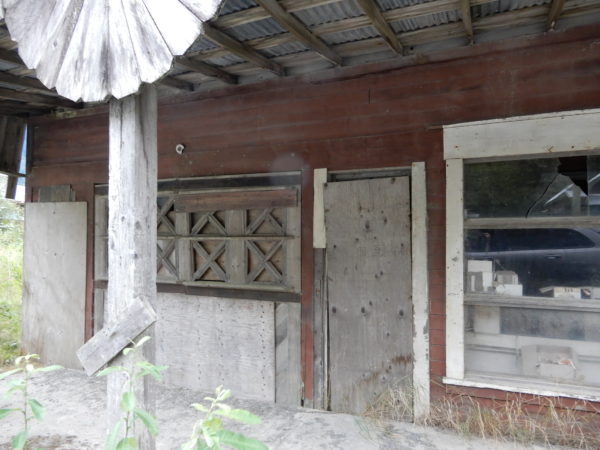
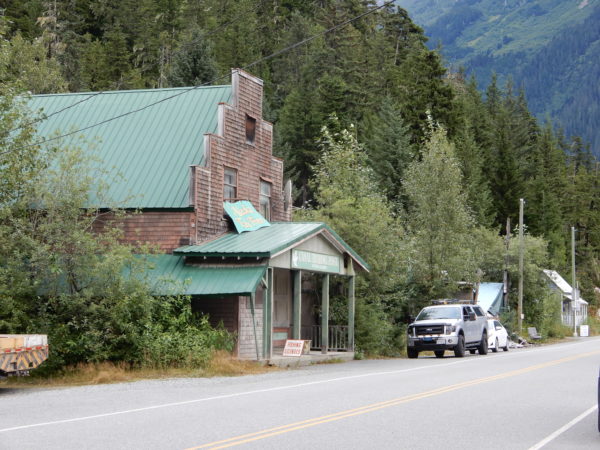
Alaska’s first masonry building is located in Hyder. It was one of four storehouses built in 1896 by the Army Corps of Engineers, led by Capt. David G. Gaillard. [Gaillard went on to identify the route the Panama Canal would take. The cut was named for him.] The storehouse was never used by the Corps of Engineers, but it has been used as shops, lodging, and a jail. The storehouse was restored in 2004.
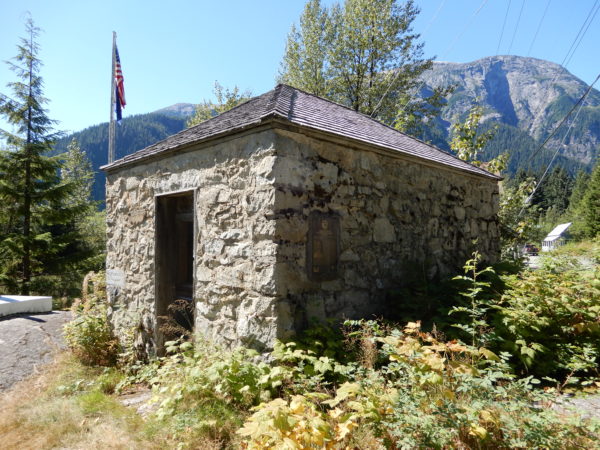
Storehouse #4
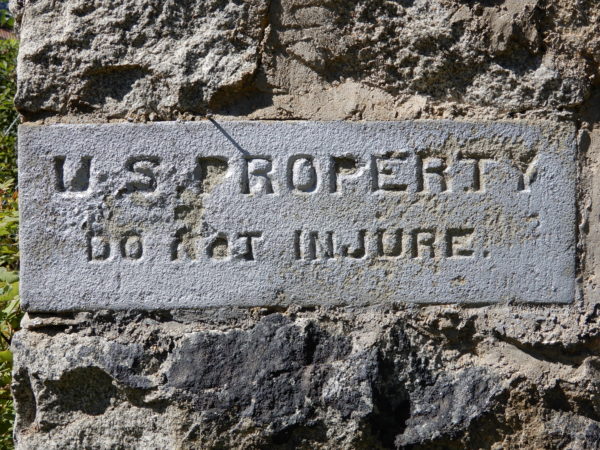
Here is something you wouldn’t think would be necessary.
Our interactions with three Hyder residents helped us gain an appreciation for the town.
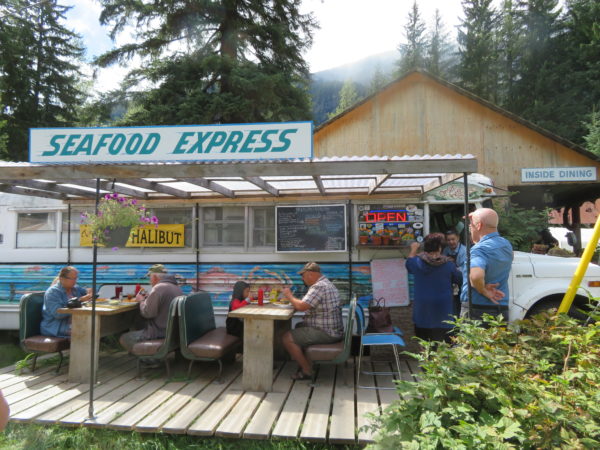
Diana Rich’s husband and son are fishermen and Diana has been cooking their catches in “The Bus” for 20 years. Our lunches were delicious and we enjoyed meeting Diana. She introduces herself on a whiteboard: “I could be in my yard or feeding chickens. Could be checking our honeybees! Just look around, I’m here. Peace, Diana.”
These are the Bus Rules:
- No worry
- No hurry
- Relax
- Enjoy
We visited the Hyder General Store looking for a cold drink. We didn’t find one, but we did find Wes Loe who operates the store. He had a heart attack year before last and has quit drinking, begun eating healthfully, and lost 70 pounds. He spoke appreciatively of how he finally has been able to get VA benefits. He and a buddy found that a store down the street had collapsed. Wes salvaged the inventory and now shares the proceeds from whatever he sells with the owner of the other store who hasn’t lived in Hyder in years. Wes has been Hyder Community Association President.
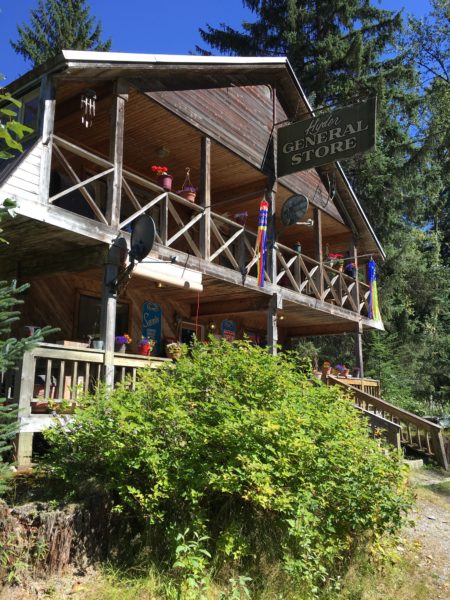
We had a geocache to find at Caroline’s Boundary Gallery and Gifts.
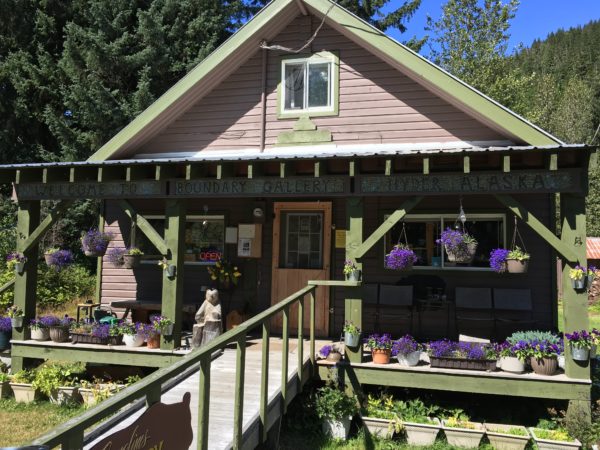
We headed inside where the cache was. A customer was talking with the proprietor, Caroline Stewart, about learning to play the mountain dulcimer, and there was a mountain dulcimer hanging on the wall behind the counter. We were surprised to find a dulcimer in Hyder. When the customer left, we talked with Caroline. Caroline said her husband Darrell could hear trees. One day he found a Sitka spruce–several hundred years old–downed by a windstorm in 2004. He hit the tree with a rock. The tone rose, fell and rose again. They harvested the wood, and luthiers around the country have made wonderful-sounding dulcimers from it. Caroline makes Hungry Bear Fudge and T-shirts. She will incorporate the ashes of a loved one into a piece of glass jewelry. She plays violin on her back porch. Sometimes a brown bear comes by for her concerts. We bought some fudge, recorded the geocache, and left reluctantly to visit Salmon Glacier, the subject of our next post.
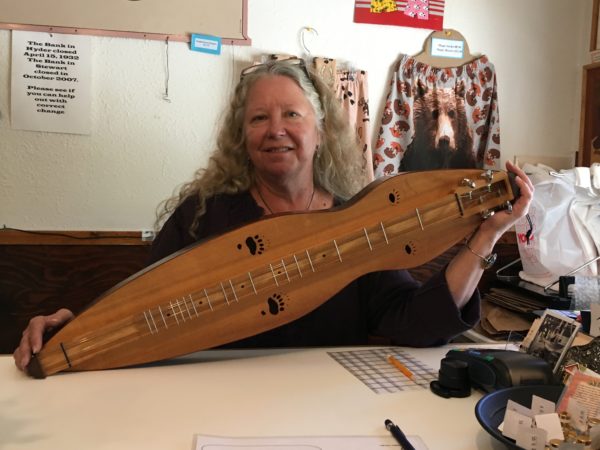
Caroline with her dulcimer made by Tom Yockey.

A sign behind Caroline’s counter
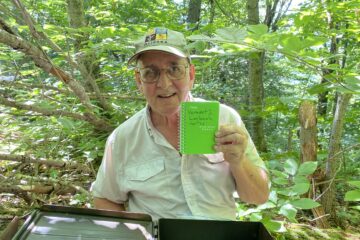
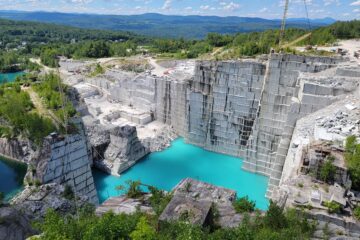
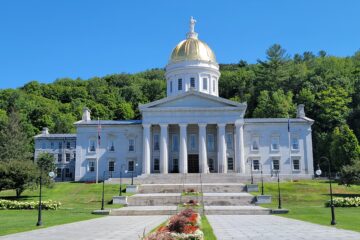
2 Comments
Jay Waters · November 19, 2018 at 10:35 pm
Nice looking instrument. I like the bear paws! Did you get the play it?
Jane Appel · November 20, 2018 at 12:02 am
I did get to play it, Jay. It was sweet! I asked about her stable and she took us upstairs to see her collection of instruments: Guitar, ukelele, bowed psaltry, violin, string stick. She played dulcimer beautifully, too.